MARIMO tea - Manufacture, Import & Wholesale
THE ORGANIC GREEN TEA GARDEN OF HAYASHI FAMILY IN MIE PREFECTURE
With the train from Nagoya in the direction to the Pacific Ocean it takes about one and a half hours to get to the Hayashis' organic green tea garden. It is located in Mie Prefecture, not far away from the coast of the Pacific Ocean.
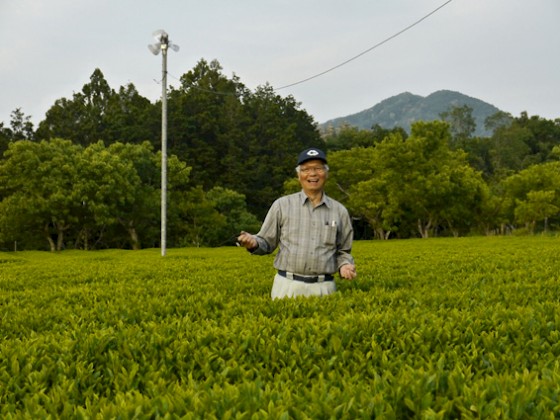
Iwao Hayashi is one of the precursors of the organic movement, who followed his own ideals, and changed the production of his own tea garden away from conventional production to organic production at the end of the seventies. Other tea gardens, for example our tea garden in Uji and also Morimoto Family, know him well as an expert for natural ways to handle with vermins - a basic topic in organic tea production.
Shortly after the introduction of the Japanese organic certification system "yuki-JAS", Mr. Hayashi got in contact with the well know certification body "JONA", which cares for the certification process of the tea garden and production. Since June 2010, the whole garden and production of Hayashi Family is certified according to the EU organic standard.
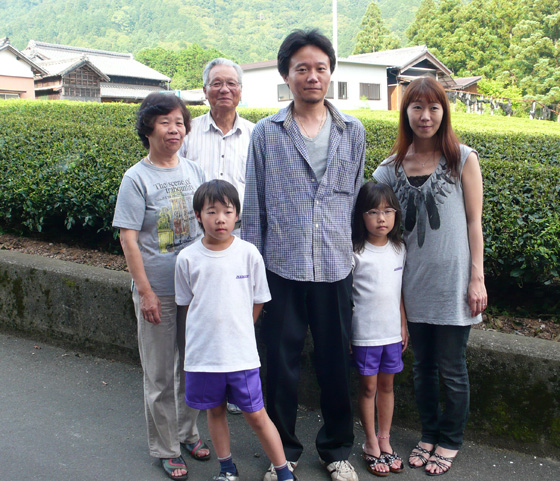
photo: Kimihiko HAYASHI with his family, 2010
The Teas of Hayashi Family show up with a typical characteristic: They are "chuu-mushi". "Fukamushi" means "deep steam", which explains that the hot steam, which stops the fermentation process, is in contact for a longer time with the tea leaves than usual Japanese green tea, calles "asamushi". "chuu-mushi", the style of Hayashi Families' teas, is in between both categories.
The tea varieties of Hayashi Family
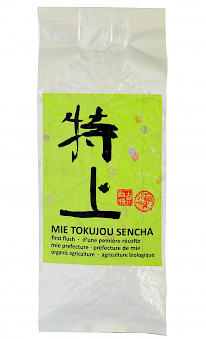 |
MIE TOKUJOU SENCHA (organic)The first harvest takes place in early May, due to the cool climate in the Mie prefecture. The Hayashi family primarily harvests the fine leaves of the bush variety Yabukita for their best sencha (tokujou). This variety develops an incredibly flowery sweetness in the moist and cool climate of this region. The Hayashi family steams this fine tea a short time longer than usual (chu-mushi). The leaf structure is very delicate and the leaf tissue dark green. The infusion has a neon green glow and appears because of the longer steaming slightly murky. Mie Tokujou Sencha has a subtle flowery fragrance and tastes enjoyably soft and fresh with an excellent sweetness. |
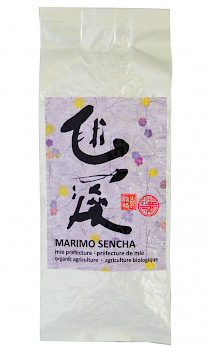 |
MARIMO SENCHA (organic)Intensive green chu-mushi sencha of the late May harvest (1st harvest). The Hayashi family primarily harvests the fine leaves of the bush variety Yabukita, but in this tea also up to 50% of the leaves come from seed grown bushes (zairai shu). Marimo Sencha tastes enjoyably soft and mild. |
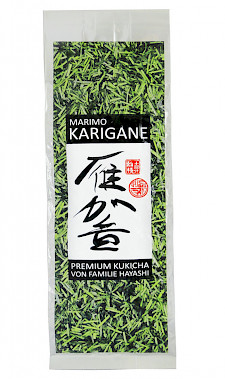 |
MARIMO KARIGANE (organic)The first buds of spring are harvested in the first flush of the Hayashi family's tea garden in Mie prefecture in early May. After steaming the leaves for a slightly longer time than usual (chu-mushi) and further processing, the leaves are separated into finer leaves (tokujou sencha) and leaf stalks (karigane). The infusion has a neon green glow and appears, because of the longer steaming, slightly murky. This premium quality karigane-kukicha is distinguished by its mild balance. |
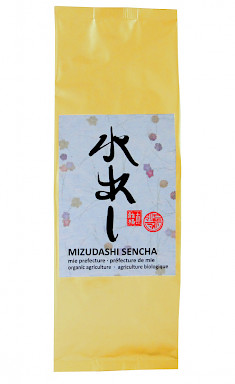 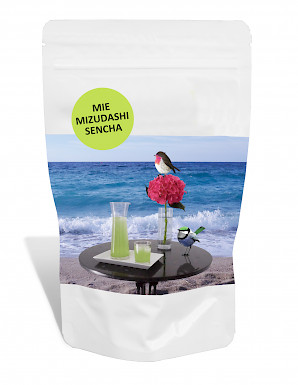 |
PREMIUM MIZUDASHI (organic)Very refreshing Mizudashi (mizu = cold water, dashi = emergence), which can be infused repeatedly with cold water. Soft, sweet with fine nuances of lemon. One is able to enjoy Premium Mizudashi after a steeping time of about one minute, even using cold water. This is possible because the small recycling bags contain a mixture of leaves and fine green tea powder. The infusion has a fresh green glow! 20 tea bags of approx. 4,1g tea (net) |
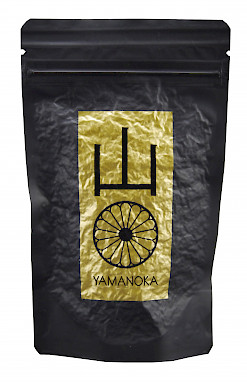 |
YAMANOKA KABUSECHA (organic) The Yamanoka Kabusecha is an exceptional, deeply steamed tea (Fukamushi). Kimihiko Hayashi (Mie) shaded the tea bushes for the Yamanoka for 14 days before the harvest. A flowery aroma, very much like lilac, flows from the kyusu while infusing the tea. The infusion itself is deeply green with many fine particles floating in the infusion. |
The longer the freshly harvested tea leaves are to be steamed, the more tea leaf structur is to be opened. This has basically two effects. On the one hand the needles form of the leaves is more fragile, which means that more leaves break and therefore more shorter "needles" are to be found. On the other hand, the infusion is characetrized by a very intensive green color, and the brewing time is very short. Even less than one minutes is enough to get a beautiful infusion.
The taste is fesh and smooth, intensive but not bitter. But these are not the only convincing characteristics of the Hayashis' teas. A further convincing point is for sure the spirit of the precursor Iwao Hayashi, who now is already at the end of his eighties, and still stands up for the organic movement.
